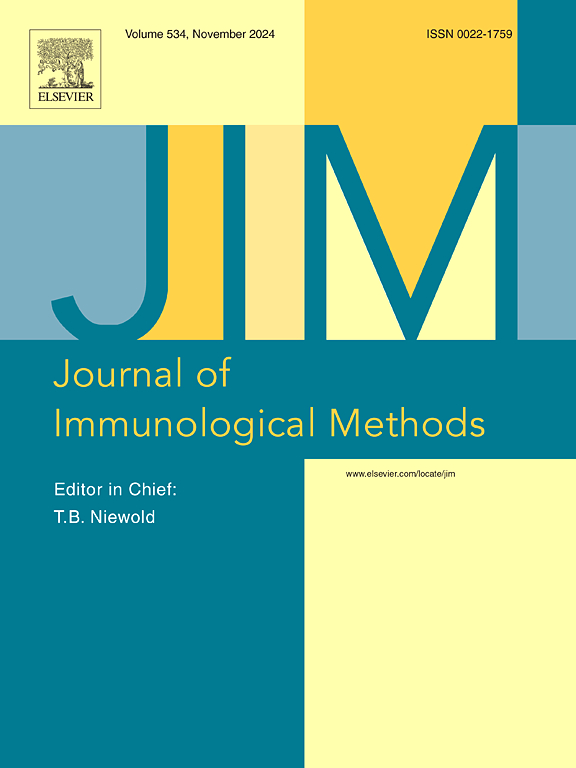Comparison of mixed modeling regression methods for the assessment of longitudinal CyTOF® data
IF 1.6
4区 医学
Q4 BIOCHEMICAL RESEARCH METHODS
引用次数: 0
Abstract
A simulation study was conducted to assess Type I error and statistical power of linear mixed models, generalized linear mixed models, and linear quantile mixed models for the analysis of longitudinal cytometry by time-of-flight data. Findings indicate that, while generalized linear mixed models have superior statistical power, they also suffer from inflated Type I error rates. Linear mixed models can have substantially lower statistical power than the other methods at larger effect sizes. While linear quantile mixed models have slightly lower statistical power at smaller effect sizes, they have intermediate statistical power at larger effect sizes and good Type I error control. Taken altogether, these results generally recommend the use of linear quantile mixed models for longitudinal datasets such as for cytometry by time-of-flight data, although linear mixed models may be slightly more useful at small effect sizes and sample sizes.
混合模型回归方法对纵向CyTOF数据评估的比较
通过仿真研究,评估线性混合模型、广义线性混合模型和线性分位数混合模型用于纵向细胞术飞行时间数据分析的I型误差和统计能力。研究结果表明,虽然广义线性混合模型具有优越的统计能力,但它们也存在膨胀的I型错误率。在较大的效应量下,线性混合模型的统计能力比其他方法低得多。线性分位数混合模型在较小的效应量下统计能力略低,而在较大的效应量下具有中等的统计能力,并且具有良好的I型误差控制。综上所述,这些结果通常建议对纵向数据集(如通过飞行时间数据进行的细胞术)使用线性分位数混合模型,尽管线性混合模型在小效应量和样本量时可能稍微更有用。
本文章由计算机程序翻译,如有差异,请以英文原文为准。
求助全文
约1分钟内获得全文
求助全文
来源期刊
CiteScore
4.10
自引率
0.00%
发文量
120
审稿时长
3 months
期刊介绍:
The Journal of Immunological Methods is devoted to covering techniques for: (1) Quantitating and detecting antibodies and/or antigens. (2) Purifying immunoglobulins, lymphokines and other molecules of the immune system. (3) Isolating antigens and other substances important in immunological processes. (4) Labelling antigens and antibodies. (5) Localizing antigens and/or antibodies in tissues and cells. (6) Detecting, and fractionating immunocompetent cells. (7) Assaying for cellular immunity. (8) Documenting cell-cell interactions. (9) Initiating immunity and unresponsiveness. (10) Transplanting tissues. (11) Studying items closely related to immunity such as complement, reticuloendothelial system and others. (12) Molecular techniques for studying immune cells and their receptors. (13) Imaging of the immune system. (14) Methods for production or their fragments in eukaryotic and prokaryotic cells.
In addition the journal will publish articles on novel methods for analysing the organization, structure and expression of genes for immunologically important molecules such as immunoglobulins, T cell receptors and accessory molecules involved in antigen recognition, processing and presentation. Submitted full length manuscripts should describe new methods of broad applicability to immunology and not simply the application of an established method to a particular substance - although papers describing such applications may be considered for publication as a short Technical Note. Review articles will also be published by the Journal of Immunological Methods. In general these manuscripts are by solicitation however anyone interested in submitting a review can contact the Reviews Editor and provide an outline of the proposed review.

 求助内容:
求助内容: 应助结果提醒方式:
应助结果提醒方式:


